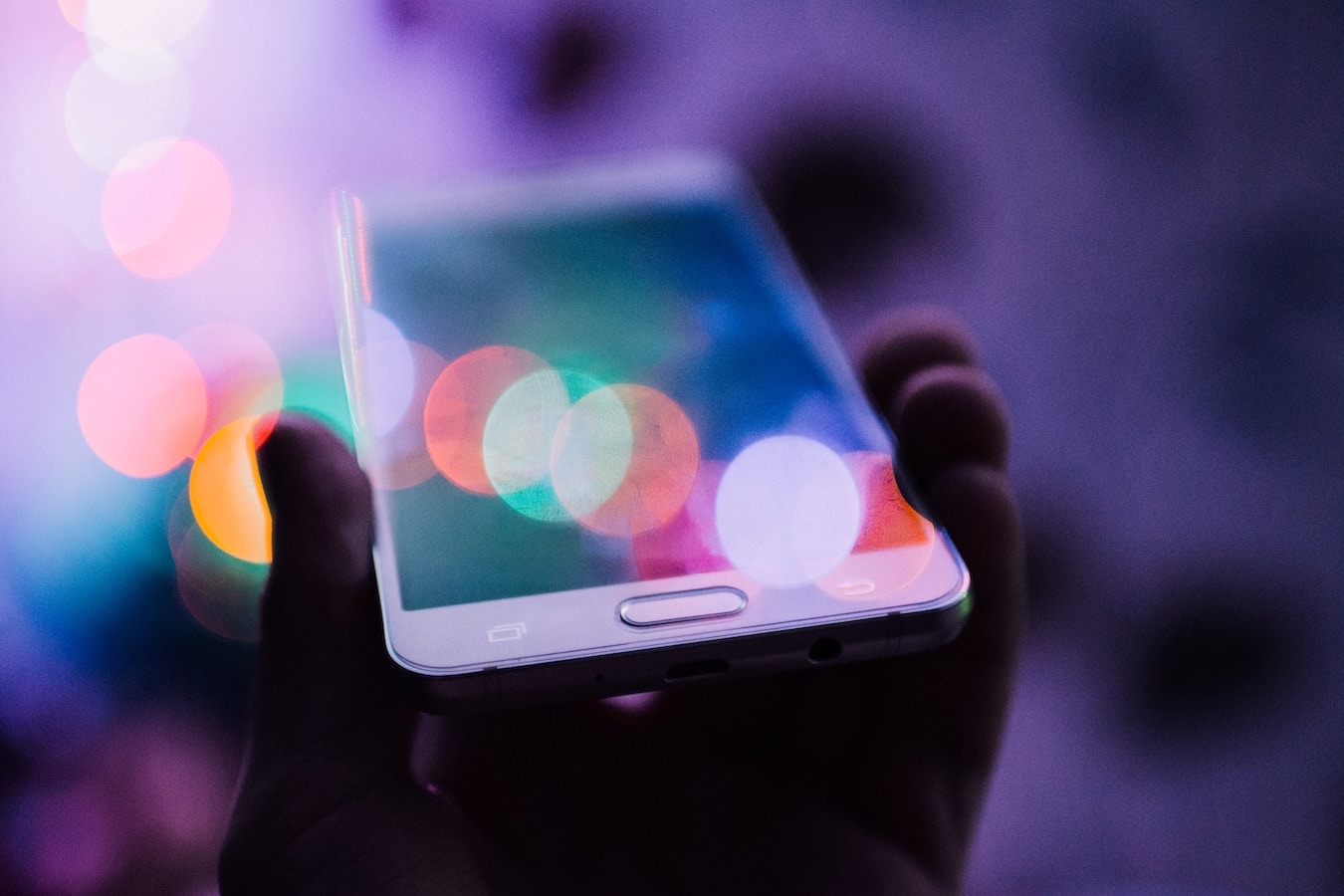The speed at which digital device usage has spread is phenomenal. Many of us are spending hours of our time each day using these devices – usually looking at screens. When you use digital devices consciously, you can be at peace with them and enjoy their benefits. You can use them in a way that’s aligned with your spiritual practice.
7 Principles Of Conscious Digital Device Usage
We’ll be looking at the following principles that bring consciousness to your digital habits and use of your smartphone, laptop, tablet and more:
- Only use a device when it’s really needed.
- Stay mindful during device usage.
- Be kind to your body during device usage.
- Communicate selectively, truthfully and skillfully during device usage.
- Have time away from your devices every day.
- Take opportunities for real human contact.
- Accept that digital device usage is part of life.
Let’s explore how to bring these principles to daily life.
Read more: You might wonder why digital consciousness is important — learn about the phenomenon of phone-induced anxiety.
Principle 1 – Only use a device when it’s really needed
Digital device usage needs to respond to a real need. Here are some examples:
- You’re lost somewhere and need to use your phone to find directions.
- You check your computer for an important email you’re expecting.
- You look at your phone to see who’s calling before deciding whether to answer.
These are examples of what I call conscious usage; you respond to a need. Unconscious usage, on the other hand, is when you use the device reactively without a real need. Some examples of this are:
- You feel lonely, so you reach for your phone without even thinking about it, and log onto social media.
- You enter a queue at a retail outlet. You automatically look at your phone without consciously deciding to do so.
- You’re missing your ex-partner. You look at their social media feed, and check out who they’ve been dating even although you know it upsets you.
Without making a conscious decision, many people’s minds are programmed to reach for their device, switch it on, and hunt for stimulus. Because much of the content is personalized and supports people’s identifications, their egos love it!
Don’t escape from the present moment
Using a device as an escape from the present moment, usually to avoid unpleasant feelings, is also a form of unconscious usage. It’s a form of addiction. The ego is using the device to escape from something that’s unpleasant.
The first truth about unconscious usage is that it takes people away from life. It takes them away from the present moment, and into a dream about the past or future.
The second truth about unconscious usage and any addiction, is that it prevents people from facing unpleasant feelings and healing emotional pain. The only way to heal is to be present with your feelings.
➤ Create a habit of stopping every time you experience a desire to use a device: Stop! Then take a second or two to check if you really ‘need’ to use it: Check. You can then make a conscious decision as to whether you should then Use the device, or Let go of using it at that moment in time. It’s a quick technique to apply and after using it a few times, over a few days, you’ll create a habit.

A simple technique to bring mindfulness and consciousness to your urge of using a digital device.
Before you read on you might want to pause and listen to one of these popular guided meditations by Darren Cockburn:
- Body Awareness Practice Of Pleasurable Sensations Darren Cockburn 11:09
- Loving Kindness Introduction & Practice Darren Cockburn 19:22
- Inner Calm Darren Cockburn 10:29
- Awaken & Connect Darren Cockburn 3:55
- Presence Meditation Darren Cockburn 37:51
Principle 2 – Stay mindful during device usage
If you’ve applied Stop! – Check – Use or a similar technique, you’ll already be mindful when you begin using your smartphone or another digital device. Being mindful, or being present, is about being aware and accepting of your experience.
Here are some tips to help you stay mindful during digital device usage:
- Only access content and enable notifications that are really needed. Consciously decide what content you’re going to access on your device. Also, take responsibility for filtering notifications and alerts.
- Avoid content you know will trigger negative reactions. If there’s content that you know is going to push your buttons, triggering you to become lost in your thoughts and emotions, avoid it. You wouldn’t put your hand in a fire. In the same way, don’t compromise your energy or alignment by exposing yourself to difficult content.
- If possible, use good quality digital devices. It’s going to be much easier to stay mindful if you’re working on a device that’s fast and simple to use, rather than one that’s sluggish and complex. When technology appears to be working against you, it’s even more challenging to stay mindful.
- Configure your devices to make them easier to use. There’s lots you can do to simplify devices, including removing unwanted apps and freeing up space to help make the device go faster.
- Keep some awareness on your breath or bodily sensations. This is a de facto technique used to become mindful and retain mindfulness.
- Be aware of thoughts and feelings. Observe your thoughts and feelings whilst using devices. If you catch your thoughts turning negative or experience unpleasant feelings, stop using the device for a moment.
- Monitor internal resistance. If you catch yourself in a state of resistance as you use your device, then something needs to change. Internal resistance may manifest when the body’s uncomfortable or you need a break from usage.
- Be aware of the space between you and the screen. For devices with screens, there’s space between your eyes and the screen. Be aware of that space at the same time as you’re looking at the screen. Awareness of space helps you stay mindful.
- Take breaks from using your device. Briefly, look away from your screen every few minutes. Rest your eyes or look at something else in your physical environment.
- Change your devices’ aesthetics. Change your background or screen saver now and again; or rearrange icons in a way that’s optimized for your current usage. This will keep your digital experience fresh.
Discover thousands of free guided mindfulness meditations to practice staying in the present moment and not be carried away by thoughts.
Principle 3 – Be kind to your body during device usage
When you’re kind to your body during device usage, it feels good. It’s also more likely that you’ll use your device consciously. It’s much easier to be mindful and skillful when your body is settled.
Maintaining a good posture during device usage helps your energy flow freely, leading to better awareness and concentration. Ideally, during usage, maintain a posture that’s both relaxed and alert. This will have a balancing effect on the mind.
Being kind to your body is also about keeping yourself safe. Devices should only be used when it’s safe to do so. When you’re using your device in a dangerous situation it’s highly likely that you’re lost in thought at the time. This means that your usage will be unskillful and harmful.
Principle 4 – Communicate selectively, truthfully and skillfully during device usage
Skillful communication and mindfulness go together. When you’re communicating skillfully, you’re mindful. And when you’re mindful, you communicate skillfully.
Everything you communicate leaves a trace. From viewing a web site to sending a message to a friend. It may be stored in various places for your whole life or longer. Before reading or sending a message, you may observe a brief pause, and use that to check that you’re present.
Here are some pointers on how to communicate skillfully when using your devices:
- Communicate Kindly – The three components of kindness are: Consideration, friendliness, and generosity. In some situations, it’s kindest to be brief and transactional if you know people are busy. It’s really a matter of tuning into the person or group you’re communicating with. And then deciding what communication is best for you all. Part of being kind is to communicate in a way that’s clear and straightforward.
Read more: Discussions on social media can quickly turn into battles and become personal. Explore guidelines to communicate compassionately in social media.
- Communicating Usefully – We have the opportunity to communicate and be heard as much as we wish in the digital era. It takes energy to communicate, and energy to process what’s communicated to you. Ask yourself if it’s needed and useful.
- Harmonious Communication – Work towards harmonious communication, rather than divisive communication. When you communicate harmoniously, you bring people together and encourage kindness. It’s a wonderful contribution to make online and encourages others to do the same.
- Conscious Sharing of Information – You can share information about yourself, other people or situations. Take a moment to think about the potential impact to yourself and others before disclosing information.
- Slow down – especially if you tend to communicate at breakneck speed. This will help you stay present.
- Be conscious of your current state of mind – Check in with your mood and feelings. If you’re at peace with yourself, it will be far easier to communicate skillfully.
- Pause briefly, before communicating online and ask yourself these four questions about what you plan to share:
- Is it kind?
- Is it useful?
- It is harmonious?
- Should I really be sharing that?
Read more: Psychologist Dr. Lillian Nejad reflects on the impact of social media on youth mental health and how to reduce the dysfunctional effects.
Principle 5 – Have time away from your devices every day
Everybody needs time away from their devices. Take time out to look after your wellbeing and meet your obligations. Regularly review how much time you’re spending using your devices. Some devices provide reports to help you monitor this.
Read more: Explore how to ease digital stress and overcome smartphone addiction with the help of mindfulness techniques.
Principle 6 – Take opportunities for real human contact
Digital communication is no substitute for real human contact. When you’re with people physically, it helps you grasp the fact that we’re all connected. When we’re physically in the company of others, all the different aspects of experience are interacting. All of the senses may be used within the communication.
If you’re very receptive you’ll notice energy passing between yourself and other people. It’s difficult to explain this energy, as it’s not form-based. You can’t see it, hear it, smell it, taste it or touch it. I cannot explain how to experience it. I just know it’s there.
Because there’s more energy flowing during real human contact, communication is deeper. This leads to you understanding people better, making stronger connections and building closer relationships.
Principle 7 – Accept that digital device usage is a part of life
For the vast majority of us, the use of digital devices including phones and computers is essential. We need to accept and embrace digital devices. The way we engage with them is going to influence future generations. We have quite a responsibility.
I’m hoping that we can enjoy all the positive benefits, live with the shortcomings and take responsibility for using them consciously. This is by far the best approach, if we wish to live a life of harmony.
Read more: In another article, Darren Cockburn reflects on what forgiveness is and how it is linked to staying mindful and present.




-1.jpg)


